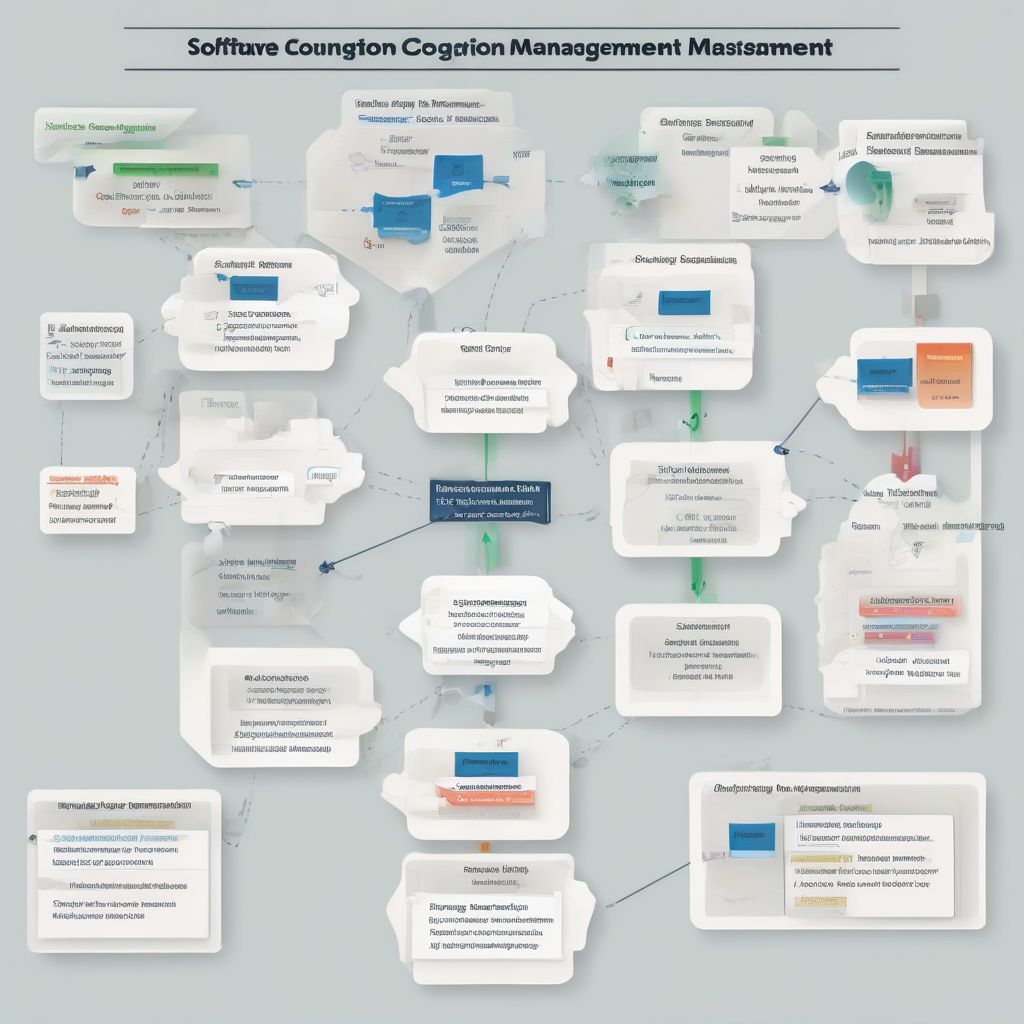In today’s fast-paced technological landscape, software development teams face constant pressure to deliver high-quality software at lightning speed. This is where Software Configuration Management (SCM) steps in as a critical process that ensures smooth sailing throughout the software development lifecycle.
docudaiduong.com/wp-content/uploads/2024/08/Software-Configuration-Management-Diagram-66bc86.jpg" alt="Software Configuration Management Diagram" width="1024" height="1024">Software Configuration Management Diagram
Understanding Software Configuration Management (SCM)
Software Configuration Management, often abbreviated as SCM, is a set of practices and tools designed to systematically manage, organize, and control changes to software systems throughout their entire lifecycle. It’s like having a meticulous record-keeper for your software, tracking every modification, version, and component to prevent chaos and ensure consistent, reliable software builds.
Why is Software Configuration Management Important?
Imagine a scenario where multiple developers are working concurrently on different features of a complex software application. Without a robust SCM system in place, it would be incredibly challenging, if not impossible, to:
- Track changes: Keeping tabs on who changed what, when, and why is essential for collaboration and debugging.
- Revert to previous versions: When bugs rear their ugly heads, SCM provides a safety net to roll back to stable versions.
- Maintain consistency: SCM ensures that all developers are working with the same, up-to-date codebase, reducing integration headaches.
- Facilitate collaboration: Teams can work in parallel on different parts of the software without stepping on each other’s toes.
- Improve software quality: By enforcing version control and testing procedures, SCM contributes to delivering more reliable software.
Key Components of Software Configuration Management:
- Version Control: At its core, SCM relies on version control systems (like Git) to track every change made to the source code.
- Build Management: This aspect focuses on automating the process of compiling and building software from source code.
- Configuration Management Database (CMDB): A central repository that stores information about all configuration items (CIs) within an IT environment, including hardware, software, and network devices.
- Change Management: SCM systems often include workflows and processes to manage and track changes to the software, ensuring proper authorization and documentation.
Common Questions about Software Configuration Management:
- What is the difference between SCM and version control? While version control is a crucial part of SCM, SCM encompasses a broader scope, including build management, change management, and more.
- What are some popular SCM tools? Some widely used SCM tools include Git, Github, GitLab, Bitbucket, and Azure DevOps.
- How do I choose the right SCM tool for my team? Factors to consider include team size, project complexity, budget constraints, and integration with other tools.
Best Practices for Effective Software Configuration Management:
- Establish clear versioning policies: Define how versions are numbered, tagged, and released.
- Implement continuous integration and continuous delivery (CI/CD): Automate the building, testing, and deployment of software to accelerate delivery cycles.
- Use branching and merging strategies: Create separate branches for new features or bug fixes to maintain a stable main codebase.
- Enforce code reviews: Require code reviews before merging changes into the main branch to ensure quality and catch errors early.
- Document everything: Maintain clear documentation for all processes, policies, and configurations.
Conclusion:
In the ever-evolving world of software development, Software Configuration Management has become an indispensable practice. By implementing robust SCM processes and leveraging the right tools, development teams can streamline their workflows, enhance collaboration, and deliver high-quality software products consistently. Embrace SCM as a cornerstone of your software development lifecycle to navigate the complexities of modern software development with confidence.
